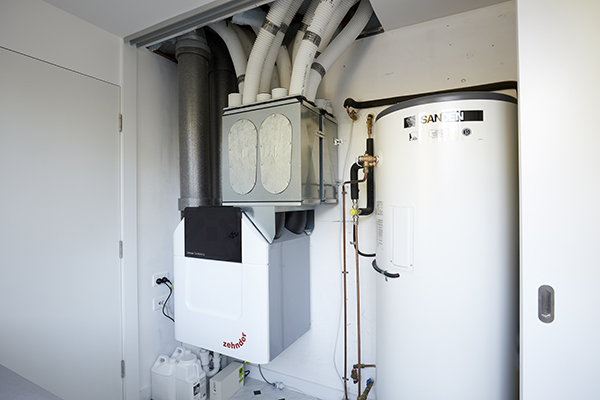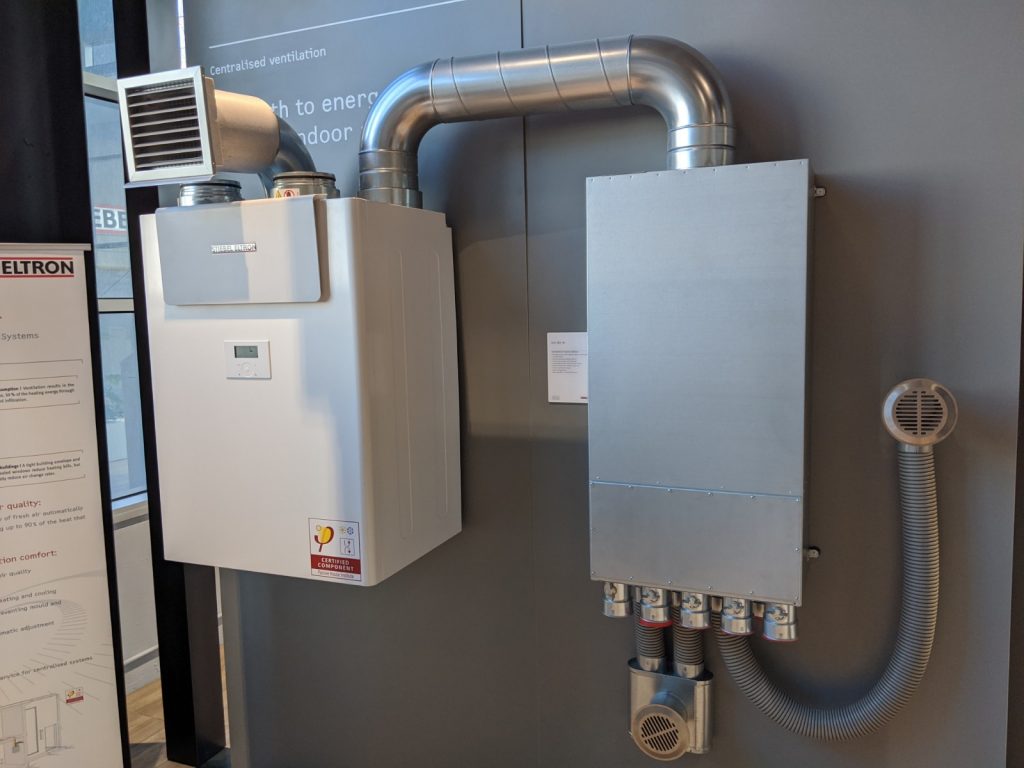Discovering the Benefits of Heat Recovery Ventilation for Energy Performance in Residences
Heat Recovery Ventilation (HRV) systems use property owners a practical method to boosting power efficiency. By reclaiming warm from outward bound air, these systems can substantially decrease cooling and heating costs. Additionally, they give a steady supply of fresh air, enhancing indoor air quality and convenience levels. As house owners think about sustainable options, recognizing the nuances of HRV systems becomes significantly crucial. What aspects should one examine before making such a financial investment?
Understanding Heat Recovery Ventilation Equipments

Exactly How HRV Boosts Indoor Air Top Quality

Power Financial Savings: The Economic Advantages of HRV
Maximizing energy effectiveness, heat recovery click this site ventilation (HRV) systems provide substantial economic benefits for homeowners. By recovering and recycling warmth from exhaust air, HRVs markedly decrease heating and cooling expenses. This innovation can result in energy savings of up to 30%, depending on climate and usage patterns. Property owners typically discover decreased utility bills quickly after setup, making HRVs an economically wise investment with time. In addition, lots of areas give rewards or rebates for energy-efficient upgrades, further boosting the monetary appeal. As energy rates proceed to rise, the cost-effectiveness of HRVs becomes significantly clear. Overall, the incorporation of HRV systems not only advertises energy performance but likewise adds to long-term monetary cost savings for families.
The Ecological Influence of Heat Recovery Ventilation
A significant environmental benefit of heat recovery ventilation (HRV) systems depends on their ability to minimize total power consumption. By reclaiming warm from exhaust air and transferring it to incoming fresh air, HRV systems reduce the need for energy-intensive heating and cooling down methods. This decrease in power demand adds to lower greenhouse gas discharges, as this link much less fossil fuel is needed to preserve comfortable indoor temperatures. In addition, HRV systems boost indoor air quality by efficiently trading stale air with fresh outside air, lowering dependence on mechanical cooling systems that can damage the setting. Overall, the implementation of HRV systems supports sustainable living methods and lines up with international efforts to combat climate change by promoting energy efficiency in household settings.
Choosing the Right HRV System for Your Home
Exactly how can property owners assure they pick the ideal heat recovery ventilation (HRV) system for their demands? First, they need to analyze their home's size and format, as these factors influence air flow needs. Next off, evaluating the system's efficiency scores is important, as higher scores show far better efficiency and energy savings. Home owners must likewise consider installation and maintenance prices, comparing different brands and models for value. Furthermore, it is essential to evaluate sound degrees, as some systems run more quietly than others. Consulting with heating and cooling specialists can provide customized recommendations based on particular home conditions. Analyzing customer testimonials and service warranties can aid in making a notified choice, ensuring that the selected HRV system properly improves indoor air high quality and power efficiency.
Often Asked Inquiries

Exactly how Typically Should I Clean or Maintain My HRV System?
The frequency of cleansing or maintaining a heat recuperation air flow (HRV) system usually depends on use and environmental factors. Normally, it is advisable to do maintenance every 6 months to guarantee peak performance and air quality.

Can HRV Systems Assist Minimize Moisture Degrees Inside?
HRV systems can effectively lower indoor humidity degrees by exchanging stagnant, moist air with fresh, drier air from outside. HRV Heat Recovery Ventilation. This process helps keep a balanced interior environment, improving comfort and protecting against moisture-related issues
What Is the Lifespan of a Typical HRV System?
The life-span of a common heat recovery ventilation (HRV) system varies, usually lasting between 10 to 15 years. Normal maintenance can extend its check that performance and functional life, making sure peak performance throughout its use period.
Exist Any Type Of Sound Interest In HRV Systems?
Sound worry about HRV systems can develop, specifically from fan procedure. Nonetheless, several modern-day systems are created to reduce sound levels, guaranteeing they run silently while preserving effectiveness, which resolves possible disruptions in living atmospheres.
Can I Install an HRV System Myself, or Do I Required an Expert?
The specific contemplated whether to mount the heat recovery ventilation (HRV) system directly or employ a professional. Generally, while DIY setup is feasible, knowledge guarantees proper capability and conformity with regional building regulations, boosting system performance.